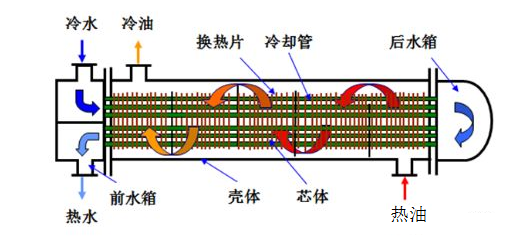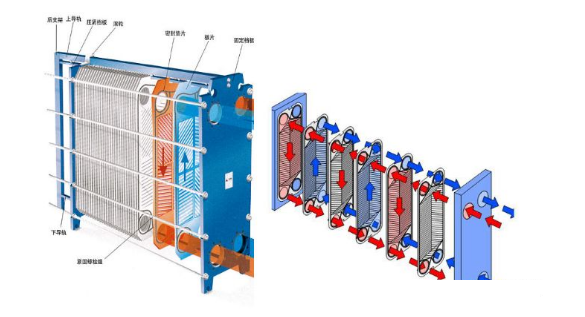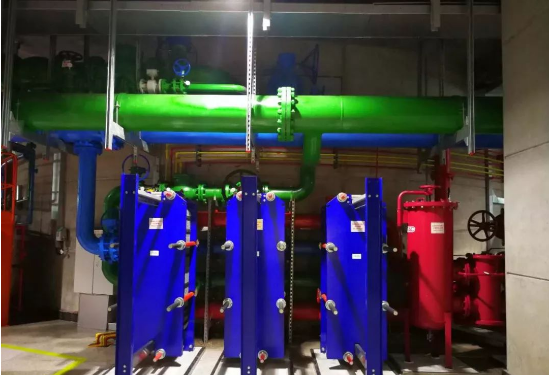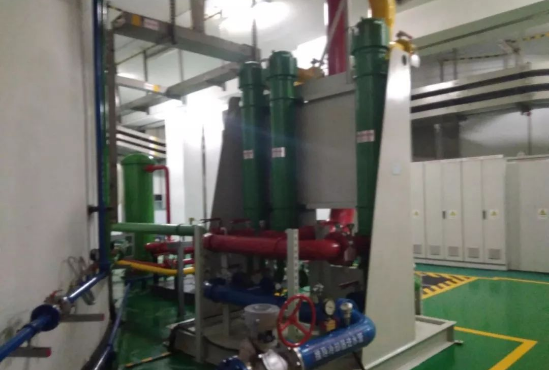Different power stations generally adopt a tube-shell or plate structure in the selection of oil coolers according to the working conditions and requirements.
Shell and tube oil cooler works:

Plate heat exchanger working principle:

Compared to shell-and-tube oil coolers, plate heat exchangers are compact and accommodate large heat transfer areas in a small space. Since the cold and heat medium flows in the gap formed between the two stainless steel sheets, the gap between the plates is small, and the heat transfer plate is stamped with a certain shape of convex and concave corrugations, forcing the fluid to constantly change the direction of flow, enabling The fluid is evenly distributed between the plates, obtaining a higher heat transfer coefficient, and thus the heat exchange efficiency is higher.
The plate heat exchanger has a small flow cross section and is easily blocked and is sensitive to scale. The heat transfer effect of the plate is reduced after scaling; therefore, the plate heat exchanger requires high cooling water quality. The plate heat exchanger is relatively difficult to clean and maintain, and the maintenance cost is high. The price of replacing the gasket is very expensive. The disintegration, cleaning and reloading have high requirements on the professional skills of the operators and are prone to leakage. At present, the application of power stations such as Qingshui, Shenshen and Haishui is also well evaluated.

Compared with the plate heat exchanger, the shell oil cooler has a simple knot structure, can withstand higher working pressure and high pressure difference on the water side of the water side, is easy to clean and maintain, is not easy to block, has low water quality requirements, and generally can be directly used as river water. Cooling water without fine filtration. The heat exchange efficiency is relatively low, and the volume is relatively large under the same heat exchange capacity. Pipeline heat exchangers are used in power stations such as Xianyou, Xianju and Jixi.

In summary, the thrust external circulation shell-and-tube cooler and plate heat exchanger have been successfully applied. As for which type to choose, it is necessary to consider the comprehensive considerations of the outer circulation piping layout space, water quality conditions, and maintenance operation and maintenance.
















 RCCN WeChat QrCode
RCCN WeChat QrCode Mobile WebSite
Mobile WebSite